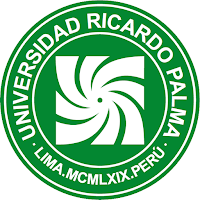César Vallejo and the staging of ideologies: Towards a new aesthetics of reality
César Vallejo and the staging of ideologies: Towards a new aesthetics of reality César Vallejo and the staging of ideologies: Towards a new aesthetics of reality
Article Sidebar
Main Article Content
Antonio Merino
Abstract
César Vallejo’s universe, which includes biography, works, literary criticism, studies, editions, and publications, is complex and contradictory. When we speak, for example, of his first readings or incursions into Vallejo’s works, as in the case of El romanticismo en la poesía castellana (1915), we are defining a working methodology that runs through the old positivist discourse of Comte, S. Mill or H. Taine, reinforced by the readings of Schlegel, Le Bonn, Menéndez Pidal, Dante, Petrarca, Byron and Schiller, which cemented his knowledge of literary reality and which, over the years, would open the doors to a new «avant-gardism» which proved to be not exempt from some infelicities of form.
Article level metrics
Downloads
Metrics
Article Details

This work is licensed under a Creative Commons Attribution 4.0 International License.
La revista utiliza una licencia Creative Commons para mostrar a los lectores y a los usuarios cómo se pueden utilizar los contenidos publicados.
Los contenidos publicados en la revista están bajo una licencia CC-BY 4.0, la cual permite:
- Compartir, copiar y redistribuir el material en cualquier medio o formato.
- Adaptar, remezclar, transformar y construir a partir del material para cualquier propósito, incluso comercialmente.
Bajo los siguientes términos:
- Atribución. Usted debe dar crédito de manera adecuada, brindar un enlace a la licencia, e indicar si se han realizado cambios. Puede hacerlo en cualquier forma razonable, pero no de forma tal que sugiera que usted o su uso tienen el apoyo de la licenciante.
La información de licencia se muestra e incrusta en las páginas de artículos y en ficheros de texto completo como sigue:
«Este obra está bajo una licencia de Creative Commons Reconocimiento 4.0 Internacional».
Ballón, E. (1979). La escritura escénica de Vallejo. En C. Vallejo, Teatro completo. Tomo I (pp. 9-25). Pontificia Universidad Católica del Perú.
Jaspers, K. (1960). Esencia y formas de lo trágico. Sur.
Jouvet, L. (1930, 2 de septiembre). [Carta dirigida a César Vallejo sobre su pieza teatral Mampar]. Archivo de la Biblioteca Nacional del Perú. https://commons.wikimedia.org/wiki/File:Carta_de_Louis_Jouvet_a_C%C3%A9sar
_Vallejo.pdf
Podestá, G. (1985). César Vallejo: su estética teatral. Instituto de Cine y Radio-Televisión.
Vallejo, C. (1960). Influencia del Vesubio en Mussolini. En Artículos olvidados (pp. 70-73). Asociación Peruana por la Libertad de la Cultura.
Vallejo, C. (1987a). El año teatral en Europa. En J. Puccinelli (comp.), César Vallejo desde Europa. Crónicas y artículos (1923-1938) (pp. 302-304). Fuente de Cultura Peruana.
Vallejo, C. (1987b). Últimas novedades teatrales en París. En J. Puccinelli (comp.), César Vallejo desde Europa. Crónicas y artículos (1923-1938) (pp. 319-321). Fuente de Cultura Peruana.
Vallejo, C. (2022). Teatro completo (edición de A. Merino). Akal.
Most read articles by the same author(s)
- Antonio Merino, Escalas: the awareness of time and pain , Archivo Vallejo: Vol. 6 No. 12 (2023): July - December
- Antonio Merino, Las estaciones de lo Real. César Vallejo y la (no) poética del 27 , Archivo Vallejo: Vol. 1 No. 1 (2018): January - June
- Antonio Merino, The Consciousness of Pain in The Black Heralds , Archivo Vallejo: Vol. 2 No. 4 (2019): July - December
- Antonio Merino, The window, the street, the ink, the scribble... César Vallejo against the reality of his time , Archivo Vallejo: Vol. 4 No. 8 (2021): July - December










